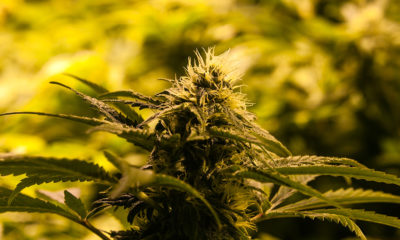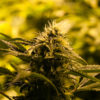
Medical
Cannabis Seems Good for Headaches, But Why?
How cannabis works on pain is about as well quantified as the “nature” of pain itself, which is to say, not well.
Headaches are common, about half the population routinely suffers from pain coming from within the cranium, and so is using cannabis to seek relief.
But just like with other sources of chronic pain, as well as the nature of pain itself, exactly how cannabis provides relief is poorly understood, mostly because it’s understudied.
Depending on the study you’re citing, between 25 and about 33% of medical cannabis users say they self-treat migraines or less-severe headaches with weed. Exactly how cannabis works on pain relief is the subject of upcoming research to be conducted at the Cannabis Research Initiative at UCLA. In the meantime, as New Atlas recently observed, most of the research on the subject is based on data from self-reported surveys, and the only clinical study on the link between headache and cannabis’s ability to relieve same looked at a synthetic cannabinoid.
So what do we know? First, women might benefit the most from any breakthroughs regarding cannabis and headaches: Women are 2 to 3 times more likely to suffer migraines, research finds, and in what animal studies do exist, females seem most sensitive to cannabis’s effects. Second, in all genders of humans who use cannabis, headaches are a common cause, and cannabis is a common solution.
In recent research conducted at Washington State University and published in the Journal of Pain, about 2,000 medical-cannabis patients tracked their cannabis use, the strains used, the purpose and the result via an app called Strainprint. The users reported about 20,000 cannabis use “sessions” in which relief from headache or migraine was the desired result. And these were almost always successful: 90% of the time, the user reported a reduction in duration or severity of the headache and the average “perceived reduction” was 50%, New Atlas noted.
Significant success, and significant reduction. Great! But how does it work, and how might the result be reliably repeated? That’s something this study can’t tell you.
As New Atlas noted, this particular study did not ask patients to try specific strains or specific THC-CBD ratios. The fact that the patients still seemed to experience notable relief despite using vastly differing cannabis strains is both encouraging and confusion: encouraging because it seems highly likely there is something in the cannabis plant that soothes pain; confusing because it’s not clear which cannabinoid, terpene, or combination thereof is doing the work.
This is also a little inconsistent with earlier findings. Contrary to what the CBD industrial complex might have you believe, high THC strains high in the terpenes myrcene and caryophyllene seemed to work best on headaches, a 2018 study published in the Journal of Headache and Pain found.
And the Washington State study has another flaw. As New Atlas noted, all the study participants were already medical cannabis users. Thus, they may be biased towards over-reporting the drug’s effectiveness, lead author Carrie Cuttler told the website.
One reason why could be the nature of cannabis itself. Unless cannabis is reducing inflammation in tendons or nerves that are then not impinged during movement, cannabis doesn’t “reduce pain” in the way pain pills do. As a brain imaging study conducted at the University of Oxford in 2012 found, people experiencing pain after taking an oral tablet of THC affected their “emotional response” to pain. That is, they were still “in pain” but just didn’t care about it as much while under the effects of cannabis. However, more frustrating for cannabis advocates, results were erratic across population groups. “Some people respond really well, others not at all, or even poorly,” as scientist Michael Lee, one of the 2012 researchers, said at the time.
This uncertain and erratic nature is the main reason why mainstream clinicians won’t recommend cannabis as a pain management tool.
Pain management itself is a very broad rubric. Is the pain you seek to treat stemming from an actual tissue injury, “nociceptive” pain? Or is it the nervous system itself that is the cause, “neuropathic” pain? One or the other may also coexist with pain caused by inflammation.
That inchoate nature, plus the drug’s “unsettling safety profile, the lack of strong empirical support for its efficacy” as well as common barriers to research and general randomness of what cannabis is available are all reasons why “cannabis should not necessarily be considered an optimal choice as a drug for pain management,” as physicians Daniel Carr and Michael Schatman wrote in the American Journal of Public Health earlier this year.
About the best anyone can say is that cannabis seems to work really well on some pain patients, but not on others — but for those that do find relief, that’s more than enough.
TELL US, has cannabis helped with your headaches?

























